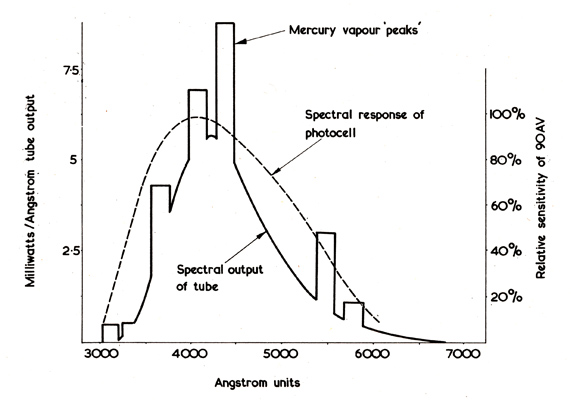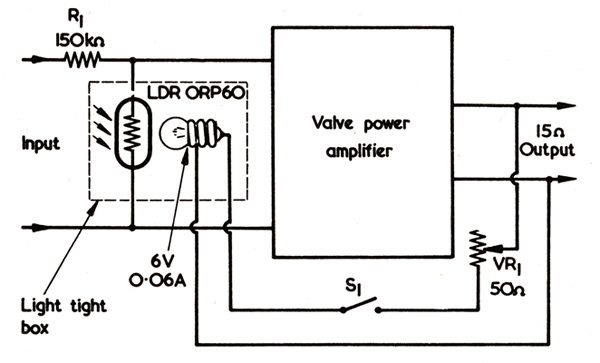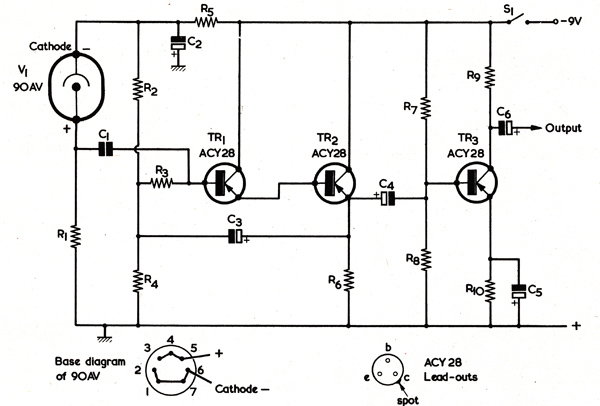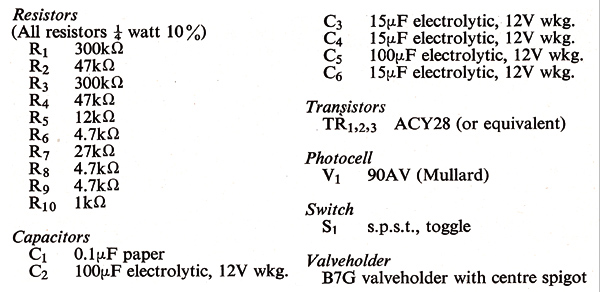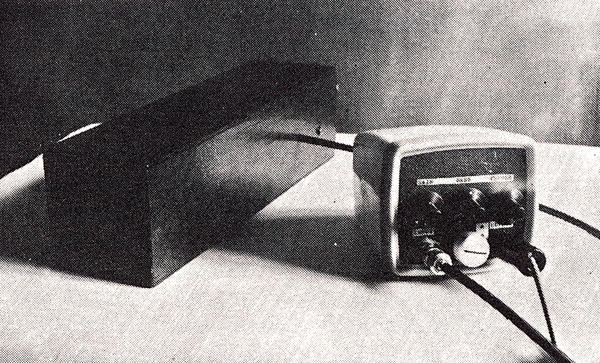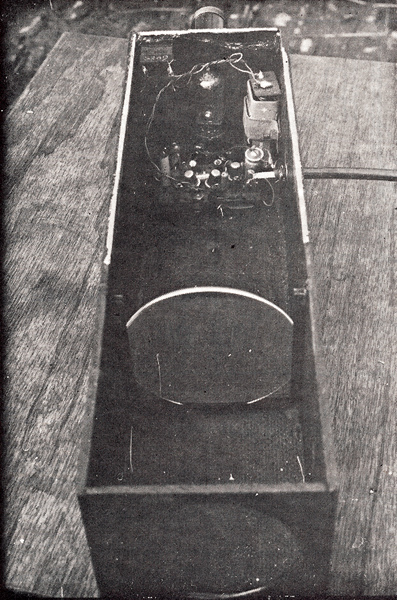A Wide-Band PhotophoneD Bollen The Radio Constructor, January, March & May, 1967.Installation of the TransmitterCareful screening is necessary at the transmitter end if AC bias is to be employed, otherwise interference will be caused to nearby long and medium wave receivers. The reflector and tube can be mounted on a pole, or placed in a window, where line of sight transmission of several hundred yards can be arranged. Switch on the power amplifier and tube power supply, and either dab a finger on the open circuit power amplifier input or feed a high level signal to the tube. This should cause the tube to fire and the 100mA meter to read. If all is well, a loud hiss should be audible from the receiver, with possibly a low note of around 700 Hz generated by the tube. With gain set at zero, switch on the pre-amplifier and bias, and adjust VC1 of Fig. 6 (in part one) until the noise at the receiver diminishes. If there is any instability in the system, the back-ground mush will continue or get louder. When these arrangements are complete a signal can be transmitted and range tests begun. At full modulation the needle of the 100mA meter will begin to flicker and, at the point where excessive modulation is applied, the reading will rise appreciably. At distances up to 100 yards very simple receivers will serve for tests. A selenium cell coupled to a three-transistor audio amplifier allows intelligible short range working, but the frequency response will be poor. Such an arrangement, however, may be used as a field strength meter, prior to more sophisticated reception arrangements. A phototransistor type of receiver will give full frequency response, but tends to be noisy in operation. For comparison, a 15 watt 240 Volt bulb was connected in place of the fluorescent tube, under similar conditions with the exception that the dropper resistor R1 of Fig. 2 (published last month) was short-circuited so that the lamp glowed brightly. With a wide-band phototransistor receiver, full treble boost and maximum bass cut from a QUAD pre-amplifier (added to the large degree of treble boost given in the Photophoneís compensation network), and taking 200 Hz as the 0db reference point, the signal was down to -10db at 5 kHz, and -15db at 15 kHz. At 15 kHz the bulb was grossly overloaded and threatened to burn out, and this was the highest level of treble pre-emphasis that could be reasonably applied. Under the same circumstances, the fluorescent tube will peak above 30 kHz and maintain its output to well beyond 60 kHz. Without a lens to focus its light to a beam, range from the 15 Watt bulb was inferior, being scarcely 100 yards. Overall EfficiencyThe limit to range with any system employing modulated light is set by receiver noise, light excursion or degree of modulation of the transmitter lamp, and the matching of the lampís peak spectral response to the optimum spectral response of the receiving photocell, photodiode, or phototransistor. With a good design of receiver, the presence of strong ambient light, during the hours of bright sunlight, should have no effect on receiver sensitivity or noise. The resultant effect may be likened to a large DC component upon which a small AC signal is imposed, daylight being the DC component. If a vacuum photocell operated at a low voltage is used, this should contribute virtually nothing to the noise generated by its following amplifier. Unfortunately, phototransistors are not quite so good in this respect, and their noise tends to be significantly high. Light excursion is mainly dependant on the type and power of lamp used. Due to its thermal inertia, a filament bulb is very inefficient at anything approaching high frequencies and the more powerful the bulb the worse does this become, thus setting a natural limit to transmitter power. Discharge tubes will permit large modulation powers without loss of treble response but these, too, do not normally respond to very high frequencies because of the ionisation effects of their gas filling. The efficiency of a fluorescent tube in this context is something of at mystery, but the writer attributes it to the ability of its phosphor coating to respond rapidly to changes in the ultra-violet content of the internal discharge. It is this ultra-violet which activates the phosphor and causes it to throw off. visible light. The performance of different types of tube has already been discussed in Part 1 of this series. The light output from filament bulbs peakstowards the infra-red end of the spectrum, and phototransistors and caesium oxidised silver photocells are sensitive to this. The fluorescent tubeís maximum output lies towards the blue and ultra violet and, depending on the phosphor employed, a caesium antimony cell will provide a good spectral match. The light output from a fluorescent tube is rather peculiar, consisting of sharp peaks of varying heights and widths distributed along the spectrum. With a caesium antimony photocell, the most efficient tubes to use for an optimum match are Ultra Violet, Blue, and Daylight coatings, in that order. The Ultra Violet tube will be approximately four times as efficient as the Daylight tube. In fact, performance figures given here for the Photophone were based upon Warm White tubes, which are even a less efficient match than the Daylight, so there is considerable scope for improvement. Fig. 9 shows the spectral responses of a Blue tube and a caesium antimony photocell. |
